Modern animation in the United States from the late 1980s to the early 2000s is frequently referred to as the renaissance age of American animation. During this period, many large American entertainment companies reformed and reinvigorated their animation departments, following the dark age, and the United States had an overall profound effect on animation globally.
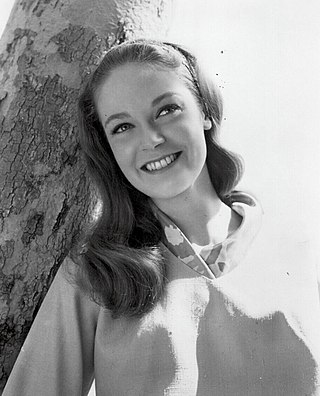
Mary Elizabeth Hartman was an American actress of the stage and screen. She debuted in the popular 1965 film A Patch of Blue, playing a blind girl named Selina D'Arcy, opposite Sidney Poitier, a role for which she was nominated for an Academy Award for Best Actress and a Golden Globe Award for Best Actress, and won the Golden Globe Award for New Star of the Year.
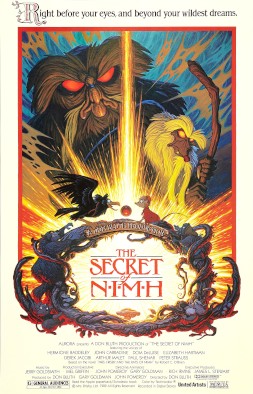
The Secret of NIMH is a 1982 American animated fantasy adventure film directed by Don Bluth in his directorial debut and based on Robert C. O'Brien's 1971 children's novel, Mrs. Frisby and the Rats of NIMH. The film features the voice of Elizabeth Hartman as the protagonist Mrs. Brisby along with those of Peter Strauss, Arthur Malet, Dom DeLuise, John Carradine, Derek Jacobi, Hermione Baddeley, and Paul Shenar. It was produced by Bluth's production company Don Bluth Productions in association with Aurora Productions.

Donald Virgil Bluth is an American filmmaker, animator, and author. He is best known for directing the animated films The Secret of NIMH (1982), An American Tail (1986), The Land Before Time (1988), All Dogs Go to Heaven (1989), Anastasia (1997), and Titan A.E. (2000), for his involvement in the LaserDisc game Dragon's Lair (1983), and for competing with former employer Walt Disney Productions during the years leading up to the films that became the Disney Renaissance. He is the older brother of illustrator Toby Bluth.

An American Tail is a 1986 American animated musical adventure comedy-drama film directed by Don Bluth and written by Judy Freudberg and Tony Geiss from a story by David Kirschner, Freudberg and Geiss. The film stars the voices of Phillip Glasser, John Finnegan, Amy Green, Nehemiah Persoff, Dom DeLuise, and Christopher Plummer. It is the story of Fievel Mousekewitz and his family as they emigrate from Russia to the United States for freedom, but Fievel gets lost and must find a way to reunite with them.
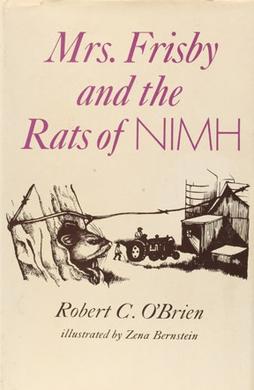
Mrs. Frisby and the Rats of NIMH is a 1971 children's science fiction/fantasy book by Robert C. O'Brien, with illustrations by Zena Bernstein. The novel was published by the Los Angeles publishing house Atheneum Books.

Gary Wayne Goldman is an American film producer, director, animator, writer and voice actor. He is known for working on films with Don Bluth such as All Dogs Go to Heaven for his directorial debut, Anastasia, An American Tail, and The Land Before Time. He was an animator at Disney before working at Sullivan Bluth Studios with Bluth.
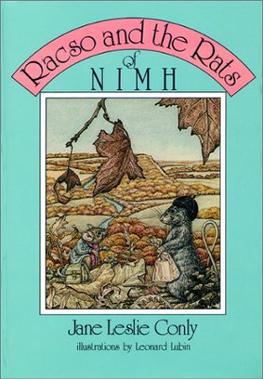
Racso and the Rats of NIMH is the 1986 sequel to the popular book, Mrs. Frisby and the Rats of NIMH, written by Jane Leslie Conly. It continues where the previous book left off. The book would be followed by a sequel published in 1990, R-T, Margaret, and the Rats of NIMH.

Robert Leslie Carroll Conly, better known by his pen name Robert C. O'Brien, was an American novelist and a journalist for National Geographic magazine. He is best known for his 1971 children's novel Mrs. Frisby and the Rats of NIMH, which was adapted to the 1982 animated film The Secret of NIMH.
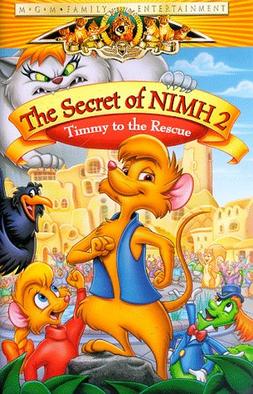
The Secret of NIMH 2: Timmy to the Rescue is a 1998 American direct-to-video animated musical adventure film produced by MGM Animation and the sequel to the 1982 animated film The Secret of NIMH. The plot, unrelated to Racso and the Rats of NIMH, the sequel to the book on which the original film was based, follows Timothy Brisby, the youngest son of Mrs. Brisby and her late husband, travels to Thorn Valley, hoping to become a hero like his father. There, he meets a young female mouse named Jenny and learns that the mice presumed dead during the NIMH escape are still alive, so they mount a rescue operation.

Thumbelina is a 1994 American independent animated musical fantasy film directed by Don Bluth and Gary Goldman, based on the story of the same name by Hans Christian Andersen. The film stars the voices of Jodi Benson, Gary Imhoff and John Hurt, with supporting roles from Gino Conforti, Charo, Gilbert Gottfried, Carol Channing and Joe Lynch.
Will Finn is an American animator, voice actor, storyboard artist, and director.
The Rats of NIMH is a trilogy of children's books, the first one by Robert C. O'Brien, and the second and third by his daughter Jane Leslie Conly. They tell the story of a society of rats rendered intelligent by scientific experimentation.
Don Bluth Entertainment was an Irish-American animation studio established in 1979 by animator Don Bluth. Bluth and several colleagues, all of whom were former Disney animators, left Disney on September 13, 1979, to form Don Bluth Productions, later known as the Bluth Group. This studio produced the short film Banjo the Woodpile Cat, the feature film The Secret of NIMH, a brief animation sequence in the musical Xanadu, and the video games Dragon's Lair and Space Ace. Bluth then co-founded Sullivan Bluth Studios with American businessman Gary Goldman, John Pomeroy and Morris Sullivan in 1985.
Phyllis Barnhart was an American animator and cel painter. She was best known for her work on the 1982 animated film, The Secret of NIMH.

The Disney Renaissance was a period from 1989 to 1999 during which Walt Disney Feature Animation returned to producing critically and commercially successful animated films. These were mostly musical adaptations of well-known stories, similar to the films produced during the era of Walt Disney from the 1930s to 1960s. The resurgence allowed Disney's animated films to become a powerhouse of successes at the domestic and foreign box office, earning much greater profits than most of the Disney films of previous eras.

Anya is a character in 20th Century Fox's animated film Anastasia (1997). An eighteen-year-old Russian orphan with amnesia, Anya travels to Paris, France, in hopes of re-discovering her past and family, collaborating with a pair of con artists who scheme to use her likeness to Russia's Imperial family to win a lucrative reward. Although largely fictionalized, the character is loosely based on two historical figures: Grand Duchess Anastasia Nikolaevna of Russia, the youngest daughter of Tsar Nicholas II, and Anna Anderson, an imposter famous for claiming to be the Grand Duchess. Plot elements from the film Anastasia (1956), in which the title character is played by actress Ingrid Bergman, served as a primary source of inspiration for Anya.
Brisby is a surname. Notable people with the surname include:












